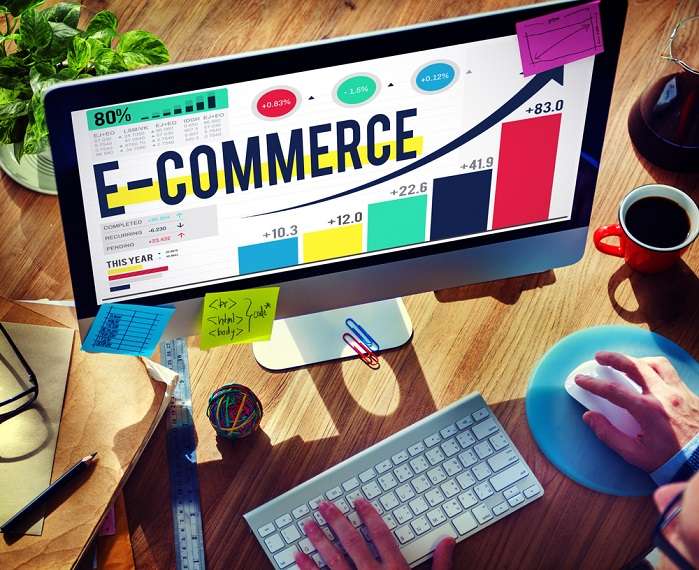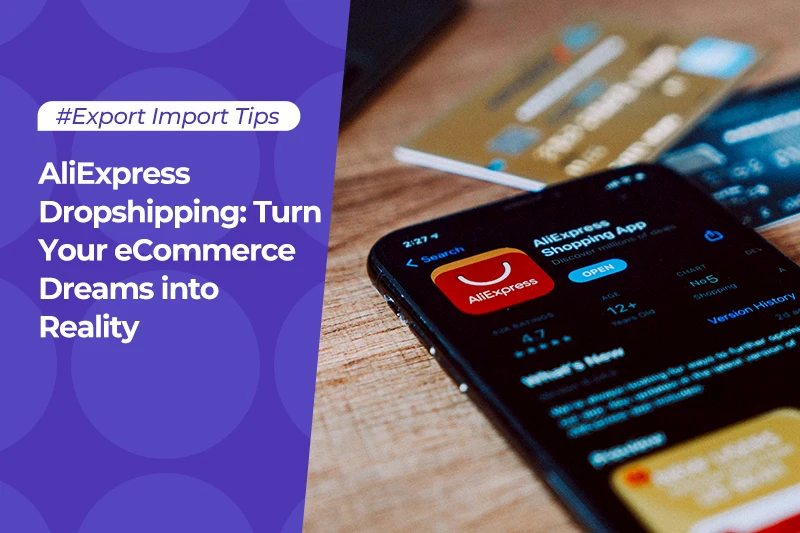10 tips for shifting to international trade from domestic trade

The global e-commerce market has seen significant growth in recent years.1 This is no surprise since the business model creates greater accessibility for both buyers and sellers.
Greater global expansion creates greater international trade opportunities for B2B businesses that currently focus on domestic trade.
This article will discuss shifting to international trade from domestic trade. We’ll break down the differences between domestic trade and international trade before we discuss a few reasons why a seller might want to shift to international trade.
From there, we will discuss 10 tips for B2B suppliers who want to make the transition to international trade from domestic trade.
Table of Contents
International trade vs. domestic trade: what’s the difference?
The difference between domestic trade and international trade is simple: international trade is between a buyer and seller from two different countries, and domestic trade is between a buyer and seller located in the same country.
Domestic trade is a bit simpler than international trade because it only requires following the laws and guidelines of one country, and international trade is a bit more complicated since it involves adhering to the rules and restrictions of multiple jurisdictions.
Although it is a bit more complex, international trade creates more opportunities than domestic trade. It opens a seller up to larger pools of buyers, which is an excellent benefit in and of itself.
5 reasons why you should shift to international trade
There are many reasons why B2B suppliers should consider selling to international buyers. Generally, the opportunities for growth are seemingly endless.
Let’s take a look at 5 specific reasons why a supplier might shift from domestic trade to international trade.
1. Tap into the global e-commerce surge
As we mentioned, the global e-commerce industry is booming. The global e-commerce industry is expected to rise to the whopping US $6.17 trillion by 2023.2
Although the COVID-19 pandemic has created many issues, it has sparked an evolution in the global e-commerce landscape and led to this boom.
Shutdowns left people stuck at home, which perpetuated the growth of e-commerce in general.3 The global aspect of e-commerce became more significant when supply chain bottlenecks left companies searching elsewhere for the products and materials that they needed.
The growth of the industry and the subsequent shifts are creating more opportunities for suppliers all over the world. If you’ve ever considered exploring international trade, now is the time to do so.

2. Explore new markets
Greater accessibility is a major appeal of e-commerce. Not only does it allow buyers to access products from other countries with the click of a button, but it allows sellers to reach new markets with almost as much ease.
Of course, exporting comes with a variety of rules and restrictions, but by selling products online, businesses are able to connect with buyers both near and far without traveling from their home countries.
Exploring new markets can open doors to new business connections, partnerships, and more.
3. Reach new buyers
As you explore new markets, your brand will also be exposed to new buyers. This alone is a major benefit for businesses. Since business is, in many ways, a number game, having a larger pool of potential customers can be very beneficial for businesses.
To put this into perspective, if a business jumps from 100 possible buyers to 200 possible buyers, it can double its clientele by simply maintaining the same conversion rate. Of course, the numbers in this example are arbitrary, and the number of new possible buyers will depend on the size of the market you’re entering.
4. Establish a competitive edge
Serving international markets can give brands an edge over their competitors who only serve a local or domestic market. By serving international markets, a supplier can become valuable to their customers that are operating in a variety of countries.
If your wholesale business supports international trade, you can serve retailers with operations in multiple countries.
Let’s say, for example, a wholesaler sells to a popular retail chain that sells sporting equipment. If the retail chain is located in multiple countries, it would be valuable if its suppliers could support their operations in different countries.
5. Create more security
If we’ve learned anything since the start of the pandemic, it’s that change is the only constant. From pandemic-related lockdowns to supply chain bottlenecks, the past several years have thrown businesses for a loop.
When you open your business to new markets, you are creating new streams of revenue for your business. This provides more security because if issues arise in one market, you can rely on deals that you have with buyers in a separate market.
10 tips for shifting to international trade from domestic trade
Although e-commerce makes international trade easier than more traditional business models, there are still quite a few things to work through as you transit from domestic to international trade.
Here are 10 tips that you can apply to make sure you’re checking all of the boxes as you move through this process.
1. Learn the global e-commerce landscape
The first thing to do as you shift from domestic trade to international trade is to study the global e-commerce landscape.
Take some time to learn about how e-commerce serves your industry and businesses with similar structures. Explore how this works on a macro-scale and observe how different markets and industries are connected to one another.
It is also important to learn how similar companies have made this transition. Reach out to those in your network who have experience, or hire an experienced consultant who can guide you through the process.
Since you’re reading this article, you’re off to a good start.
2. Determine the best target market
Once you have a general idea of the global e-commerce landscape, you’ll have to determine where your business fits into that. This involves determining who your target audience will be.
Think about what country or countries you could serve based on the resources available to you. Perhaps there is a specific country that you have ties to that would lower the cultural or language barriers that would be involved with entering the market.
For example, if you’re based in Australia, it might be easier to enter the United Kingdom or the United States rather than India or China. This is because the former are both English-speaking nations, like your own.
Once you’ve chosen an international market to enter, you can take the parameters of your domestic target market and use them to definite your target audience within the new market.
3. Review local requirements for international trade
Most countries have some sort of guidelines for international trade. This means that you’ll likely need to obtain licenses or certifications in order to be able to sell your products in other countries.
Since many countries are motivated to grow their GDPs and expand their global relevance, exporting is often highly encouraged by local governments. As long as you follow the rules, you should have no issue being cleared to export from your nation’s government.
4. Look into importing requirements
Your local requirements for international trade are just one piece of the puzzle. Foreign countries have their own requirements for importing goods, so you’ll need to meet the requirements of the destination country, as well.
You can find out about the destination country’s importing requirements from the country’s trade department, embassy, or consulate. Your freight forwarding partner can also be a valuable resource.4
5. Prepare for customs declarations
Part of exporting to different countries is meeting their individual customs requirements. Customs declarations typically require a variety of information about the sender, the recipient, and the contents of the parcel or container that are entering the country.
Again, the requirements for clearing customs vary from country to country, so make sure you follow the rules of the new market you plan to enter.
6. Consider localized marketing efforts
As you explore new markets, it is important that your marketing efforts are reassessed for relevance to your new target market. You’ll likely need to tweak your messaging in ads, organic content, and other branded materials.
Messaging that works for your local audience may not go over well with a different target audience, and this is definitely something to be aware of. Language is very nuanced, and specific words and phrases can take on different meanings in different cultural contexts. A catchphrase or headline may be a total hit in one nation and a total miss in another.
If these new markets are unfamiliar to you, it is wise to hire a marketing specialist who is local to the new market. A specialist with local knowledge will help you create a strategy that incorporates content that provides cultural relevance to the new audience.

7. Think about direct vs. indirect exporting
Businesses that are expanding into international trade should consider both direct and indirect exporting. These are different approaches to international trade that B2B suppliers should consider as they make this transition.
Direct exporting involves doing business with an individual or organization in another country without any intervention from a third-party organization. Indirect exporting involves selling through a third-party facilitator who already has ties within the destination country.
Each of these exporting methods has its own pros and cons. Direct exporting is a bit more difficult because it requires establishing a brand and formalizing a business operation in a new market from scratch. However, it gives suppliers a lot more control over the situation.
Indirect exporting, on the other hand, is a bit easier because it operates with the support of an established exporting partner. A downside is that the seller cannot control the entire buying and fulfillment experience, so their brand image is at the mercy of their exporting partner.
8. Make strategic partnerships
Even if you decide to stick with direct exporting, it is a good idea to create strategic partnerships with individuals or organizations within the foreign market you intend to enter.
This sort of partner can help you penetrate the new market, connect with local leads, and troubleshoot any issues you may encounter. The internet can be a valuable resource for all of these things, but nothing will compare to the support of experts who are familiar with trade patterns like yours.
9. Explore logistics options
Cross-border logistics is another important consideration for those who have decided to engage in international trade. Shipping methods can be different for international trade since sometimes, it requires transporting products overseas.
Consider shipping methods, such as land, air, and sea. Think about which method makes the most sense for your business. Also, begin to consider whether you’ll be shipping full containers or partial containers, as this will determine what sort of logistics provider makes the most sense for your business.
As you figure out what logistics methods make the most sense for your international expansion, begin to seek quotes from various logistics companies that serve your location and the locations that you’ll enter with your expansion.
10. Crunch the numbers
Since many B2B suppliers expand into international trade with the goal of making more sales and making more money, it is important to create realistic expectations of the profitability of this shift.
As you consider all the moving parts to international trade and their associated costs, begin tracking the expected expenses. Make sure to make a note of even the smallest of costs because these things add up. From there, compare this to your projected revenue. Is the return on investment worth it to your business?
This call-out isn’t to discourage you. It is simply designed to help you make sure that you’re making the best decision for your business.
Start selling on Alibaba.com
International trade can open new doors for businesses that are currently only selling to domestic buyers. An online B2B marketplace, such as Alibaba.com, is a great resource for manufacturers and wholesalers who are looking to expand in a global direction.
Alibaba.com offers many tools for B2B suppliers who want to explore exporting. In fact, the platform supports several features that are specifically geared toward cross-border trade. These include auto-translated messages, dozens of supported payment methods, and more.
Open a seller account on Alibaba.com to start connecting with international buyers in no time at all.
Resources
1: https://www.shopify.com/enterprise/global-ecommerce-statistics#:~:text=large%20to%20ignore.-,How%20big%20is%20the%20global%20ecommerce%20market%3F,profitable%20option%20for%20online%20retailers.
2: https://www.shopify.com/enterprise/global-ecommerce-statistics#:~:text=large%20to%20ignore.-,How%20big%20is%20the%20global%20ecommerce%20market%3F,profitable%20option%20for%20online%20retailers.
3: https://www.census.gov/library/stories/2022/04/ecommerce-sales-surged-during-pandemic.html
4: https://www.tradewindfinance.com/news-resources/complete-guide-to-import-country-requirements
Start your borderless business here
Tell us about your business and stay connected.
Keep up with the latest from Alibaba.com?
Subscribe to us, get free e-commerce tips, inspiration, and resources delivered directly to your inbox.















